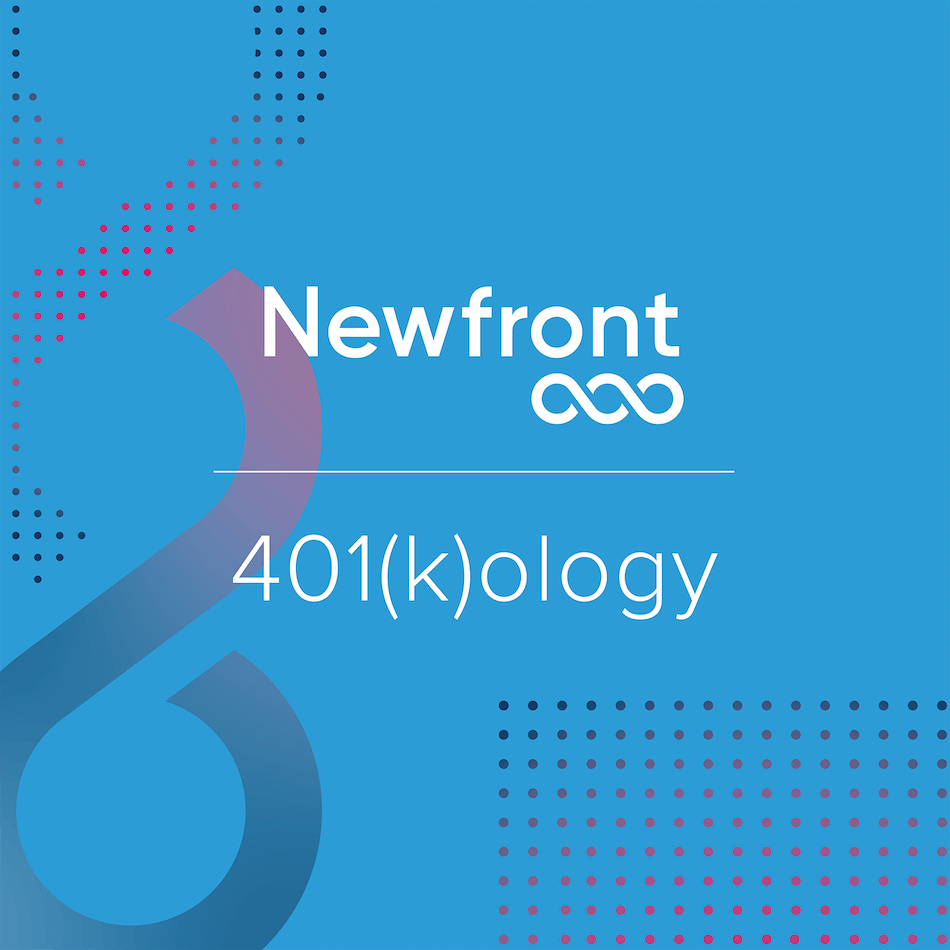401(k)ology – The Impact of Employee Fringe Benefits on Retirement Plan Compensation
By Joni L. Jennings, CPC, CPFA®, NQPC™ | Published May 2, 2022

Fringe benefits are a common form of supplemental payment to employees that are subject to employment taxes, unless specifically excluded by law. For example, the use of a company vehicle by an employee is in most cases considered a taxable fringe benefit (can be excluded under §132 in some situations). Fringe benefits may be in the form of cash or a non-cash benefit; and, the value of the benefit to the employee is the amount that is includable in W2 wages (net any amount that the employee paid for the benefit).
Common examples of Employee Fringe Benefits:
Accident & Health Insurance
Childcare & Adoption Assistance
Education Assistance
Employee Stock Options
Life Insurance
Health Savings Accounts
Commuter Benefits
Personal use of company car
Default Position: Non-Taxable Fringe Benefits Excluded, Taxable Fringe Benefits Included
As outlined above, “fringe benefit” is a term with no precise definition and can include a wide variety of supplemental benefits for employees. While all definitions of compensation exclude non-taxable fringe benefits, taxable fringe benefits are only excluded from eligible plan compensation if the terms of the plan document specifically exclude fringe benefits. Therefore, taxable fringe benefits by default are included unless otherwise provided in the plan document. Many retirement plans exclude all forms of fringe benefits from eligible plan compensation and would indicate such in the adoption agreement or the plan document.
Employers have the discretionary authority to interpret plan provisions and terms. If certain benefit items are not specifically enumerated in the terms of the plan, the employer can interpret borderline items to be within or without the definition of a fringe benefit provided the interpretation is applied on a consistent basis.
If the employer offers a fringe benefit that is borderline or subject to interpretation, the specific form of fringe benefit may be listed in the plan document as to the inclusion or exclusion from eligible plan compensation. Failure to include all forms of eligible compensation in determining retirement plan contributions results in a plan operational failure. Refer to our recent article on missed deferral opportunities.
Regardless of whether the employer considers an item to be a fringe benefit, the taxable benefit is included in eligible plan compensation unless the plan terms specifically exclude fringe benefits. By default, non-taxable fringe benefits are excluded from compensation and taxable fringe benefits are included in compensation.
How Does Excess GTL Impact Retirement Plan Contributions?
One of the most frequently asked fringe benefit questions is regarding Group Term Life Insurance (“GTL”), and how the “excess” GTL coverage is treated for retirement plan purposes. In general, GTL coverage up to $50,000 that is provided to an employee is excluded from taxable wages (refer to IRS Publication 15-B (2022), Employer’s Guide to Fringe Benefits for specific details about exclusions). The cost of coverage exceeding $50,000 (less any amounts the employee paid toward the coverage) is included in an employee’s taxable income.
If your plan document uses either the W2 definition or the §415 safe harbor definition of compensation, then the imputed income from excess GTL coverage is included in compensation. If your plan document defines compensation as §3401(a) wages for withholding, the imputed income from excess GTL coverage is excluded.
Assuming your plan uses either W2 or §415 compensation, your plan may still exclude taxable fringe benefits from eligible plan compensation. It is very important to know how eligible plan compensation is defined for your retirement plan to prevent incorrect deferrals and incorrect employer contribution allocations.
For example, if your plan document defines eligible plan compensation as Form W2- Box 1 plus pre-tax deductions and excludes taxable fringe benefits, then the excess GTL would be excluded from eligible plan compensation.
If your plan document had the same definition but did not exclude taxable fringe benefits, then the excess GTL would be included for purposes of calculating an employee’s matching or other employer contribution.
The same is true for the §415 safe harbor definition of compensation.
Why Does the Excess GTL Get Excluded From the §3401(a) Wage Definition?
Excess GTL is not included in the wage withholding definition because the imputed income from GTL coverage exceeding $50,000 is not subject to withholding.
How Does the Inclusion/Exclusion of Taxable Fringe Benefits Impact 401(k) Deferrals?
Excess GTL, as well as other taxable fringe benefits, may not be paid in cash. If it is not a cash payment, the value of the benefit is imputed. An employee cannot defer out of imputed income, but it is very important to know if any imputed compensation must be included in plan compensation for purposes of allocating employer contributions.
Conclusion
It is vitally important to know how your retirement plan defines eligible plan compensation. If you need assistance interpreting the plan document provisions, we are happy to assist you. Getting plan compensation correct takes coordination between your payroll provider and your retirement services team. Our team at Newfront is available to assist you with any questions regarding plan compensation that may arise.
Helpful Quick Links

Joni L. Jennings, CPC, CPFA®, NQPC™
Chief Compliance Officer, Newfront Retirement Services, Inc.
Joni Jennings, CPC, CPFA®, NQPC™ is Newfront Retirement Services, Inc. Chief Compliance Officer. Her 30 years of ERISA compliance experience expands value to sponsors of qualified retirement plans by offering compliance support to our team of advisors and valued clients. She specializes in IRS/DOL plan corrections for 401(k) plans, plan documents and plan design.


